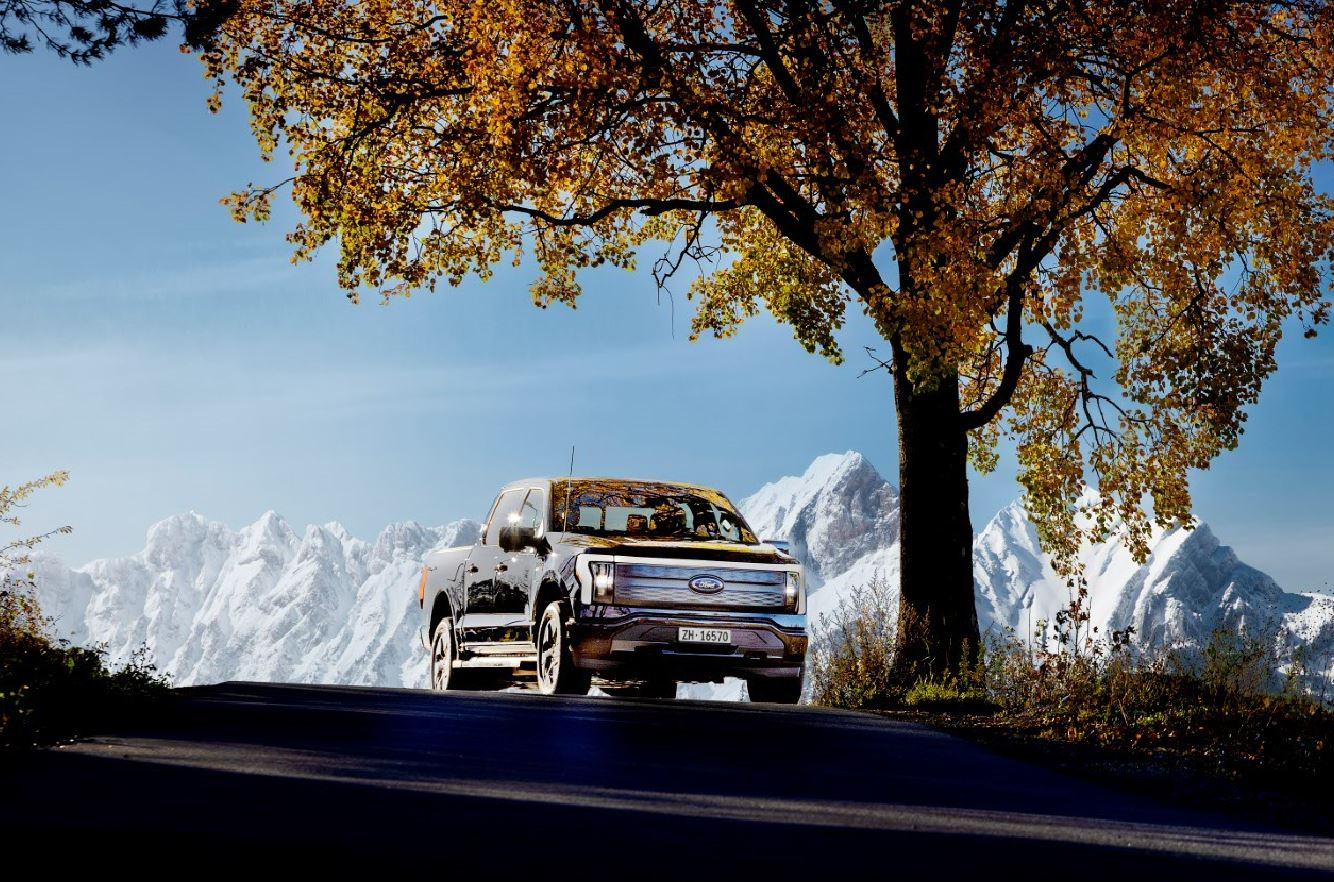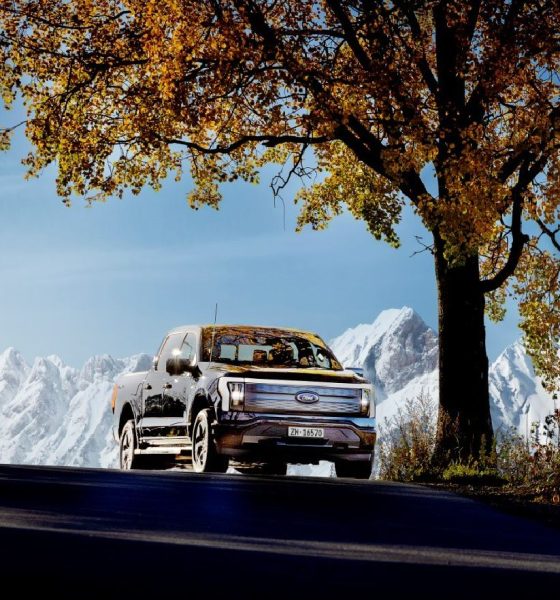

News
Ford’s love affair with EVs softens as profitability and consumer trends take focus
Update: headline updated to show Ford is still committed to EVs, just at a less intense rate.
Ford’s love affair with EVs is softening, the automaker announced today, as it shifted plans for its next few vehicles to be hybrid-electric instead of fully electric.
The move comes as profitability and consumer trends are taking focus. Ford has struggled to get its head above water in terms of making money on its EVs, scaling back its investment amount on one occasion and adjusting its strategy on another.
Consumers are also showing more interest in hybrids than pure EVs. Studies have shown that hybrid drivers are among the most satisfied on the road, as a recent survey from ACSI displayed increased satisfaction from those drivers over pure EV and gas engine owners.
Ford is taking steps to pull back from its increased focus on EVs and instead go into a new direction. “We’re committed to creating long-term value by building a competitive and profitable business,” Ford’s Vice Chair and CFO John Lawler said. “With pricing and margin compression, we’ve made the decision to adjust our product and technology roadmap and industrial footprint to meet our goal of reaching positive EBIT within the first 12 months of launch for all new models.”
How is Ford’s Strategy Changing?
Ford’s new strategy will see its next three-row SUVs utilize hybrid technologies. It also wants to adjust the speed at which electric vehicle models are released, hoping to be more aligned with customer adoption instead of keeping pace with industry leaders.
Tesla sells well, but Ford, even though it has been the number two brand in the U.S. for EVs, has not been able to keep pace. Tesla, simply put, is head and shoulders above everyone in the market when it comes to reliability, tech, and charging infrastructure. Although Ford has adopted Tesla’s North American Charging Standard (NACS) and gained access to the Supercharger Network, consumers still lean toward the Model 3 and Model Y, two vehicles that have dominated the market for the past several years.
Ford is taking a $400 million non-cash charge for the write-down of certain product-specific manufacturing assets for all previously planned all-electric SUVs. The company will no longer build these models, it said.
Focus on Commercial EVs
Ford will still be building EVs, but its entire game plan will be shifting significantly. Ford’s next-gen EVs will be built at the Ohio Assembly Plant in 2026 and will start with a commercial van.
The E-Transit will still be produced, as it is the best-selling commercial EV van in the country. It also helps business owners keep their bottom line as it has positive impacts on the total cost of ownership.
A New, Low-Cost, High Efficiency EV
Ford will bring a new mid-sized EV pickup to market in 2027 with more range, utility, and useability. It will be the first vehicle that comes as a result of the platform developed by the Ford Skunkworks team that the company established in 2022.
The platform developed by the Skunkworks team will yield more EVs in “multiple vehicle styles” and is designed to scale quickly thanks to its “minimal complexity.”
A new Electric Truck
Ford’s F-150 Lightning was the best-selling EV truck for several months, although Cybertruck overtook it in June. Ford planned to bring a new truck to market next year, labeling it the “T3.” However, this has been pushed back.
Ford will now bring the T3 pickup to market in the latter half of 2027. This will offer more features and experiences than any other Ford truck, including upgraded bi-directional charging and advanced aerodynamics. It will be built at the BlueOval City Electric Truck Center in Tennessee.
Overall, Ford’s shift in strategy is probably for the better, considering its business was quite literally hemorrhaging money. It is important that it develops and builds EVs, as many customers are still in the market for one and now prefer that powertrain to any other.
However, in the grand scheme, hybrids have taken over as the most desirable powertrain, which is pushing Ford to make this shift in the name of making money and going with what consumers want.
I’d love to hear from you! If you have any comments, concerns, or questions, please email me at joey@teslarati.com. You can also reach me on Twitter @KlenderJoey, or if you have news tips, you can email us at tips@teslarati.com.

News
Tesla aims to combat common Full Self-Driving problem with new patent
Tesla writes in the patent that its autonomous and semi-autonomous vehicles are heavily reliant on camera systems to navigate and interact with their environment.

Tesla is aiming to combat a common Full Self-Driving problem with a new patent.
One issue with Tesla’s vision-based approach is that sunlight glare can become a troublesome element of everyday travel. Full Self-Driving is certainly an amazing technology, but there are still things Tesla is aiming to figure out with its development.
Unfortunately, it is extremely difficult to get around this issue, and even humans need ways to combat it when they’re driving, as we commonly use sunglasses or sun visors to give us better visibility.
Cameras obviously do not have these ways to fight sunglare, but a new patent Tesla recently had published aims to fight this through a “glare shield.”
Tesla writes in the patent that its autonomous and semi-autonomous vehicles are heavily reliant on camera systems to navigate and interact with their environment.

The ability to see surroundings is crucial for accurate performance, and glare is one element of interference that has yet to be confronted.
Tesla described the patent, which will utilize “a textured surface composed of an array of micro-cones, or cone-shaped formations, which serve to scatter incident light in various directions, thereby reducing glare and improving camera vision.”

The patent was first spotted by Not a Tesla App.
The design of the micro-cones is the first element of the puzzle to fight the excess glare. The patent says they are “optimized in size, angle, and orientation to minimize Total Hemispherical Reflectance (THR) and reflection penalty, enhancing the camera’s ability to accurately interpret visual data.”
Additionally, there is an electromechanical system for dynamic orientation adjustment, which will allow the micro-cones to move based on the angle of external light sources.
This is not the only thing Tesla is mulling to resolve issues with sunlight glare, as it has also worked on two other ways to combat the problem. One thing the company has discussed is a direct photon count.
CEO Elon Musk said during the Q2 Earnings Call:
“We use an approach which is direct photon count. When you see a processed image, so the image that goes from the sort of photon counter — the silicon photon counter — that then goes through a digital signal processor or image signal processor, that’s normally what happens. And then the image that you see looks all washed out, because if you point the camera at the sun, the post-processing of the photon counting washes things out.”
Future Hardware iterations, like Hardware 5 and Hardware 6, could also integrate better solutions for the sunglare issue, such as neutral density filters or heated lenses, aiming to solve glare more effectively.
Elon Musk
Delaware Supreme Court reinstates Elon Musk’s 2018 Tesla CEO pay package
The unanimous decision criticized the prior total rescission as “improper and inequitable,” arguing that it left Musk uncompensated for six years of transformative leadership at Tesla.

The Delaware Supreme Court has overturned a lower court ruling, reinstating Elon Musk’s 2018 compensation package originally valued at $56 billion but now worth approximately $139 billion due to Tesla’s soaring stock price.
The unanimous decision criticized the prior total rescission as “improper and inequitable,” arguing that it left Musk uncompensated for six years of transformative leadership at Tesla. Musk quickly celebrated the outcome on X, stating that he felt “vindicated.” He also shared his gratitude to TSLA shareholders.
Delaware Supreme Court makes a decision
In a 49-page ruling Friday, the Delaware Supreme Court reversed Chancellor Kathaleen McCormick’s 2024 decision that voided the 2018 package over alleged board conflicts and inadequate shareholder disclosures. The high court acknowledged varying views on liability but agreed rescission was excessive, stating it “leaves Musk uncompensated for his time and efforts over a period of six years.”
The 2018 plan granted Musk options on about 304 million shares upon hitting aggressive milestones, all of which were achieved ahead of time. Shareholders overwhelmingly approved it initially in 2018 and ratified it once again in 2024 after the Delaware lower court struck it down. The case against Musk’s 2018 pay package was filed by plaintiff Richard Tornetta, who held just nine shares when the compensation plan was approved.
A hard-fought victory
As noted in a Reuters report, Tesla’s win avoids a potential $26 billion earnings hit from replacing the award at current prices. Tesla, now Texas-incorporated, had hedged with interim plans, including a November 2025 shareholder-approved package potentially worth $878 billion tied to Robotaxi and Optimus goals and other extremely aggressive operational milestones.
The saga surrounding Elon Musk’s 2018 pay package ultimately damaged Delaware’s corporate appeal, prompting a number of high-profile firms, such as Dropbox, Roblox, Trade Desk, and Coinbase, to follow Tesla’s exodus out of the state. What added more fuel to the issue was the fact that Tornetta’s legal team, following the lower court’s 2024 decision, demanded a fee request of more than $5.1 billion worth of TSLA stock, which was equal to an hourly rate of over $200,000.
Delaware Supreme Court Elon Musk 2018 Pay Package by Simon Alvarez
News
Tesla Cybercab tests are going on overdrive with production-ready units
Tesla is ramping its real-world tests of the Cybercab, with multiple sightings of the vehicle being reported across social media this week.

Tesla is ramping its real-world tests of the Cybercab, with multiple sightings of the autonomous two-seater being reported across social media this week. Based on videos of the vehicle that have been shared online, it appears that Cybercab tests are underway across multiple states.
Recent Cybercab sightings
Reports of Cybercab tests have ramped this week, with a vehicle that looked like a production-ready prototype being spotted at Apple’s Visitor Center in California. The vehicle in this sighting was interesting as it was equipped with a steering wheel. The vehicle also featured some changes to the design of its brake lights.
The Cybercab was also filmed testing at the Fremont factory’s test track, which also seemed to involve a vehicle that looked production-ready. This also seemed to be the case for a Cybercab that was spotted in Austin, Texas, which happened to be undergoing real-world tests. Overall, these sightings suggest that Cybercab testing is fully underway, and the vehicle is really moving towards production.
Production design all but finalized?
Recently, a near-production-ready Cybercab was showcased at Tesla’s Santana Row showroom in San Jose. The vehicle was equipped with frameless windows, dual windshield wipers, powered butterfly door struts, an extended front splitter, an updated lightbar, new wheel covers, and a license plate bracket. Interior updates include redesigned dash/door panels, refined seats with center cupholders, updated carpet, and what appeared to be improved legroom.
There seems to be a pretty good chance that the Cybercab’s design has been all but finalized, at least considering Elon Musk’s comments at the 2025 Annual Shareholder Meeting. During the event, Musk confirmed that the vehicle will enter production around April 2026, and its production targets will be quite ambitious.








